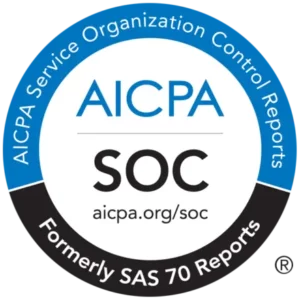Key Takeaways
- AI Saturation: The global AI market is expected to grow more than 13 times its current size, leading to an unprecedented amount of AI-generated content saturating the internet year over year.
- GPT 3.5 Plagiarism: Copyleaks found that 59.7% of GPT 3.5’s outputs contained plagiarism.
- Plagiarism By Subject: The analysis showed higher plagiarism rates in subjects such as Physics, Chemistry, and Math than in Theater and Humanities.
- AI Detection: Effective AI detection tools are crucial for marketing teams, content creators, and more to maintain authenticity and avoid copyright infringement.
A 2024 Copyleaks analysis compared the percentage of web pages containing AI content following the release of ChatGPT. In December 2022, 185 of the 1MM web pages analyzed contained AI content. In 2024, that number had jumped to over 15,000.
And that’s just the beginning.
The global AI market is expected to grow more than 13 times its current size, reaching $1.81 trillion by 2030, leading to an unprecedented amount of AI-generated content saturating the internet year over year.
As AI expands, concerns about data pollution and the inevitable model collapse persist around AI-generated text’s overall quality and reliability. Furthermore, broader concerns about originality have surfaced following several lawsuits regarding AI infringing on copyright. As a result, educational institutions and enterprises worldwide are questioning the authenticity of AI text: Where did it originate from? Is it safe to use as original content?
Ultimately, does AI plagiarize?
To find out, Copyleaks conducted an analysis to determine the degree to which AI-generated content is original and free of potential plagiarism.
Number of Papers Tested for Each Subject
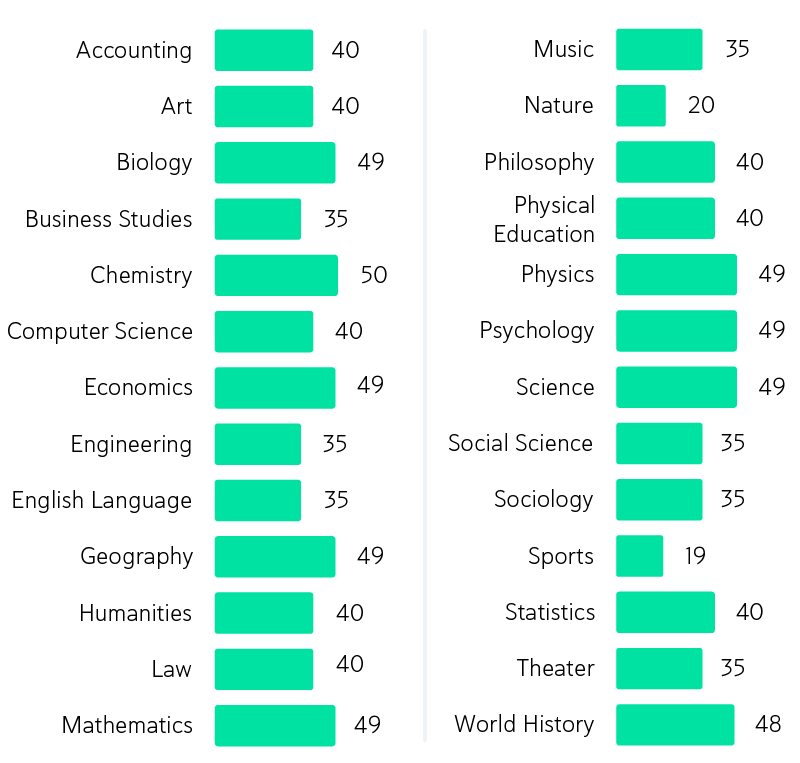
To conduct this analysis:
We asked GPT-3.5 to write 1,045 outputs, averaging 412 words across all outputs, in 26 subjects.
59.7% of GPT-3.5 Outputs Contained Some Form of Plagiarized Content
Physics:
Chemistry:
Science:
Psychology:
Law:
Economics:
Biology:
Business Studies:
Engineering:
Accounting:
Geography:
Mathematics:
Computer Science:
Sports:
World History:
Philosophy:
English Language:
Art:
Physical Education:
Statistics:
Social Science:
Nature:
Music:
Sociology:
Humanities:
Theater:
83.7%
68.0%
67.3%
63.3%
57.5%
57.1%
55.1%
51.4%
51.4%
50.0%
49.0%
49.0%
47.5%
42.1%
39.6%
37.5%
37.1%
35.0%
35.0%
32.5%
28.6%
25.0%
22.9%
22.9%
15.0%
14.3%
Mathematics:
Physics:
Psychology:
Science:
Biology:
Chemistry:
Economics:
Business Studies:
Computer Science:
Law:
Statistics:
Physical Education:
Sports:
Accounting:
Art:
Engineering:
Philosophy:
Geography:
Nature:
World History:
Sociology:
English Language:
Social Science:
Music:
Theater:
Humanities:
67.4%
57.1%
53.1%
51.0%
49.0%
46.0%
38.8%
37.1%
35.0%
30.0%
30.0%
22.5%
21.1%
20.0%
20.0%
20.0%
17.5%
16.3%
15.0%
12.5%
11.4%
8.6%
8.6%
5.7%
5.7%
0.0%
Physics:
Psychology:
Chemistry:
Science:
Biology:
Computer Science:
Economics:
Business Studies:
Mathematics:
Philosophy:
Statistics:
Sports:
World History:
Accounting:
Law:
Nature:
Physical Education:
Art:
Engineering:
Geography:
Sociology:
English Language:
Music:
Social Science:
Humanities:
Theater
79.6%
79.6%
66.0%
65.3%
63.3%
62.5%
59.2%
57.1%
49.0%
47.5%
47.5%
47.4%
45.8%
42.5%
42.5%
40.0%
40.0%
35.0%
34.3%
32.7%
31.4%
28.6%
25.7%
20.0%
15.0%
5.7%
*Identical Text: A one-for-one copying of someone else’s text that is passed off as your own
**Minor Changes: Content with minor alterations to the source material, such as altering a verb within a sentence (e.g., slow to slowly)
***Paraphrased Text: Putting someone else’s idea into your own words without crediting the original source
Copyleaks then conducted an in-depth analysis to gauge the specific outputs with the highest levels of identical text, minor changes, and paraphrasing across all 26 subjects.
Identical Text
Our analysis found that the individual GPT-3.5 output with the highest percentage of plagiarism was in Physics, where 27.0% of the text was identical. This was followed by an individual Chemistry output where 24.7% of the text was identical.
Outputs With the Highest Percentages of Identical Text for Each Subject
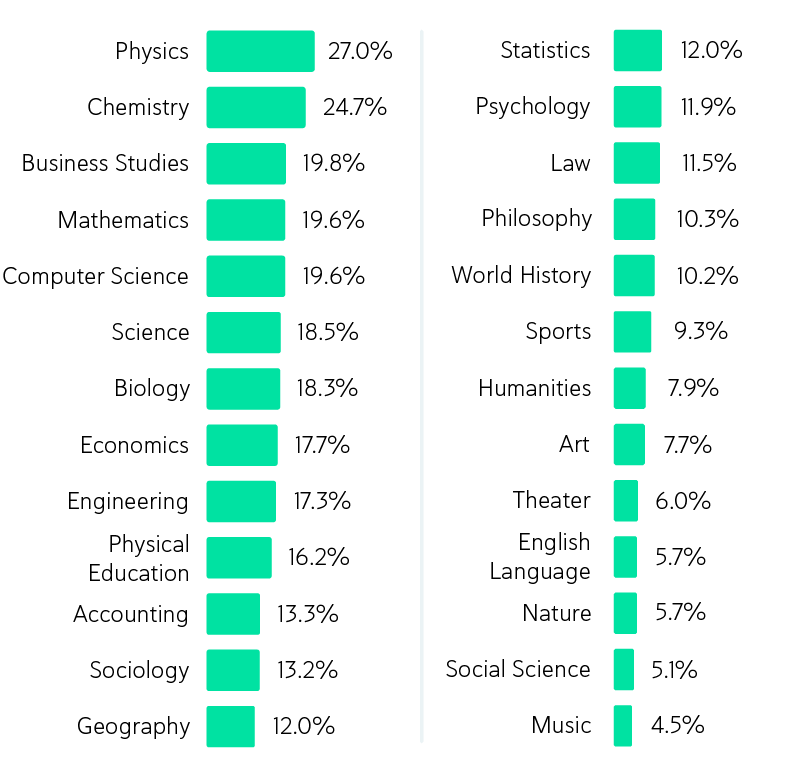
Minor Changes
The individual GPT-3.5 outputs with the highest percentages of minor changes were from Physics and Psychology, where 25.2% of each respective output contained minor changes.
Outputs With the Highest Percentages of Minor Changes for Each Subject
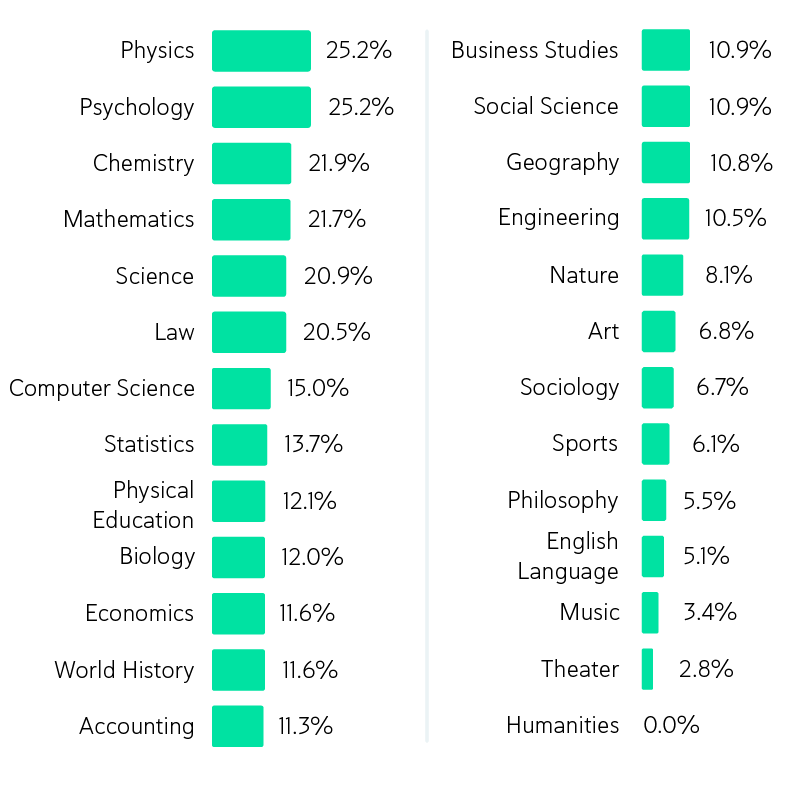
Paraphrased
The Individual GPT-3.5 output with the highest percentage of paraphrasing was in Computer Science, where a surprising 80.7% of the text was paraphrased. This was followed by an indiviudal Physics output where 76.3% of the text was paraphrased.
Outputs With the Highest Percentage of Paraphrasing for Each Subject
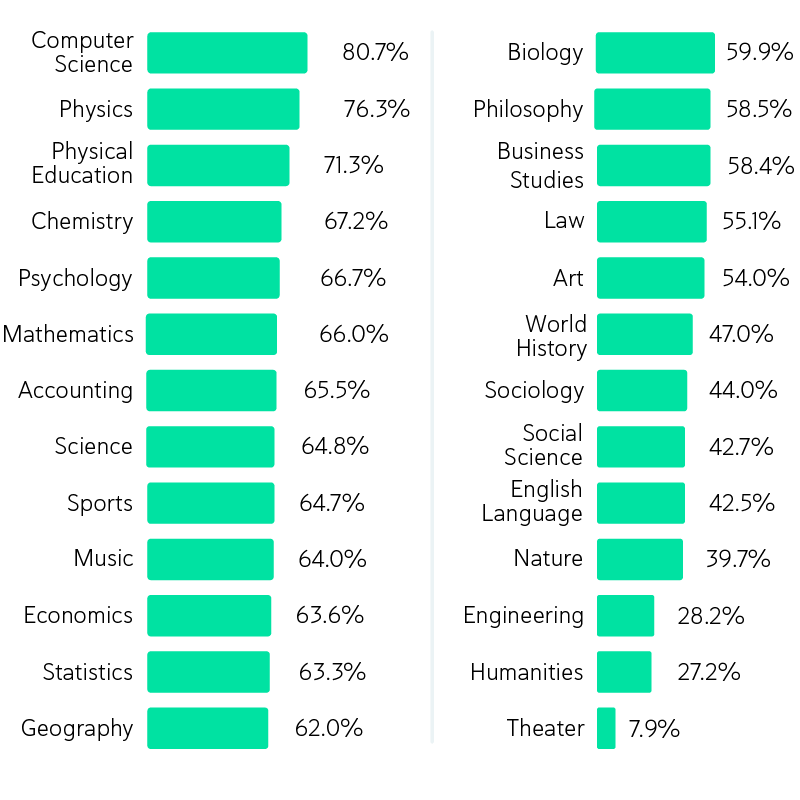
Similarity Score
The Similarity Score is a Copyleaks-specific scoring method aggregating the rate of identical text, minor changes, paraphrased text, and more. A score of 0% signifies that all of the content is original, whereas a score of 100% means that none of the content is original.
Subjects With the Highest and Lowest Average Similarity Scores
The subject with the highest average Similarity Score is Physics at 31.3%, followed closely by Psychology at 27.7% and Science at 26.7%. The subjects with the lowest average Similarity Score are Theater at 0.9%, Humanities at 2.8%, and English Language at 5.4%.
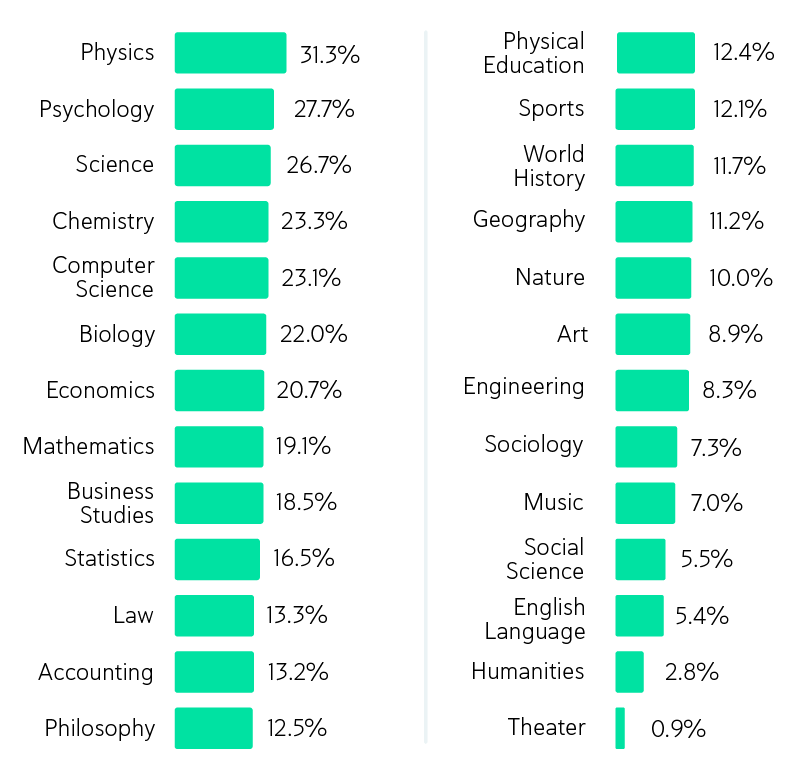
Outputs With the Highest Similarity Score for Each Subject
Across all subjects, our analysis found that the individual GPT-3.5 output with the highest Similarity Score was in Computer Science, with an astounding 100%, followed by Physics with 92% and Psychology with 88%.
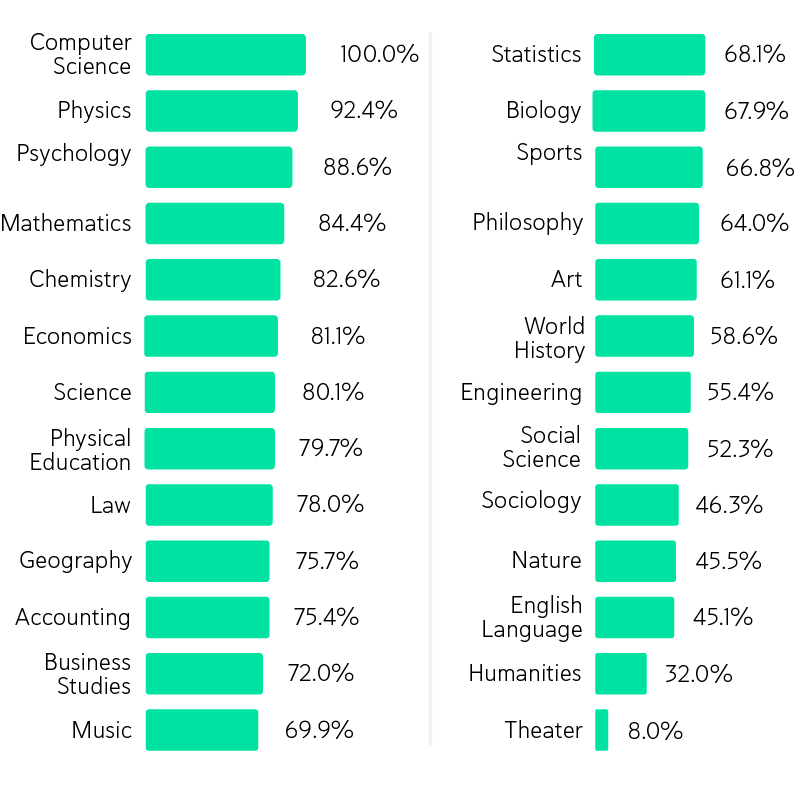
Key Takeaways
With AI-generated content expanding and continuing to saturate the internet, having key solutions in place is critical. As the Copyleaks data shows, nearly 60% of AI-generated content contains some form of plagiarism.
The insights provided by the analysis can help educational institutions and organizations put emphasis on certain subjects when checking for plagiarism, allowing them to tailor their approach as needed to ensure all potential risks and concerns are addressed. For example; Physics, Chemistry, Mathematics, and Psychology might require a more in-depth look to identify plagiarized text, while other subjects, including Theater and Humanities, may require less scrutiny.
Furthermore, the data underscores the need for organizations to adopt solutions that detect the presence of AI-generated content and provide the necessary transparency surrounding potential plagiarism within the AI content. Full-spectrum protection that includes AI and plagiarism detection ensures compliance with copyright and licensing and empowers authenticity and originality within all content.
